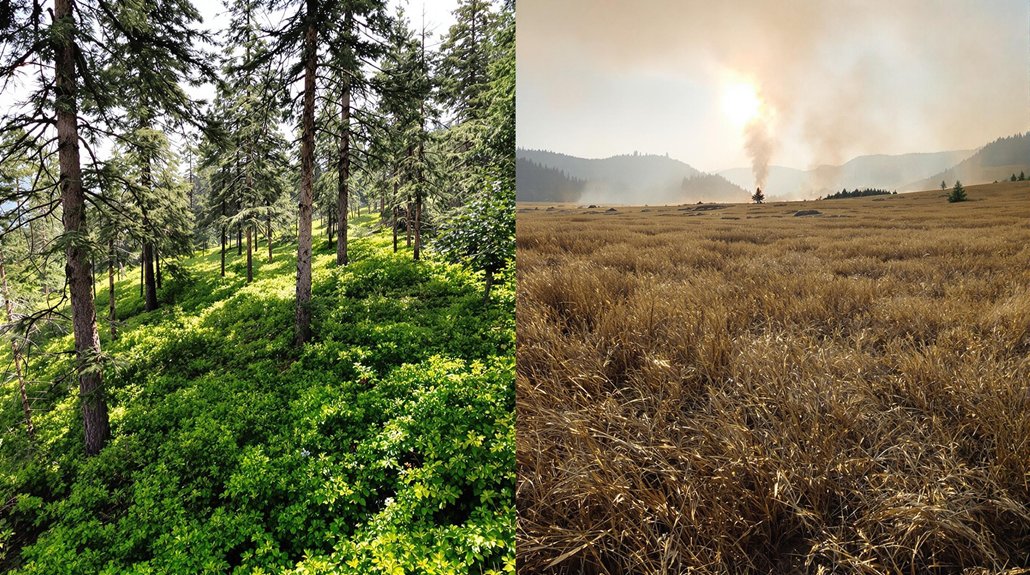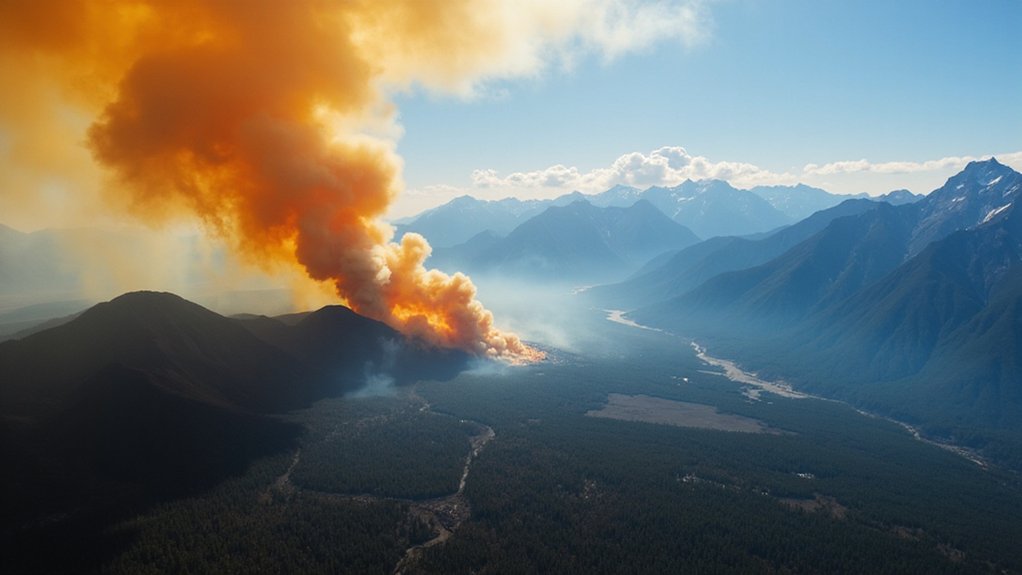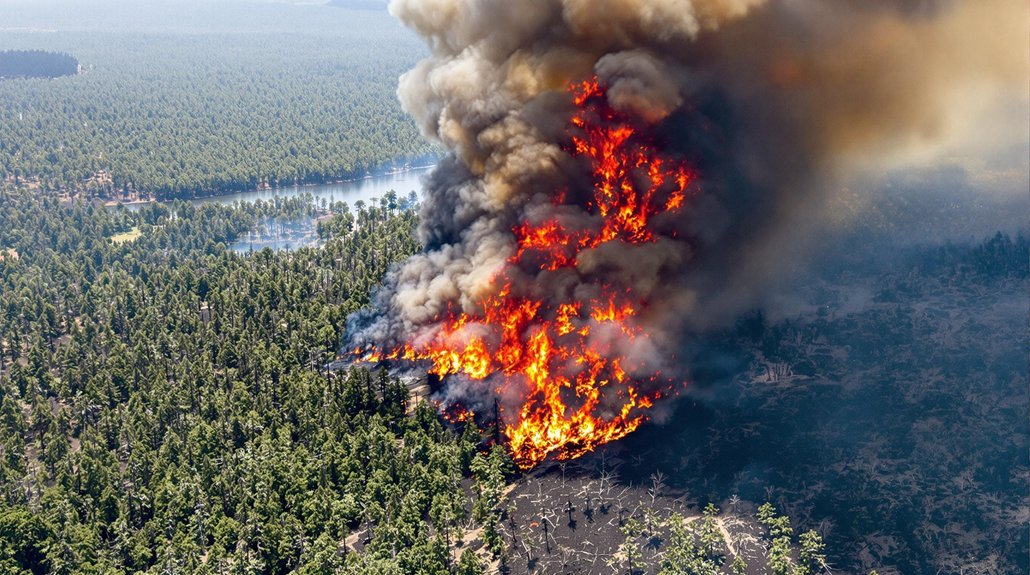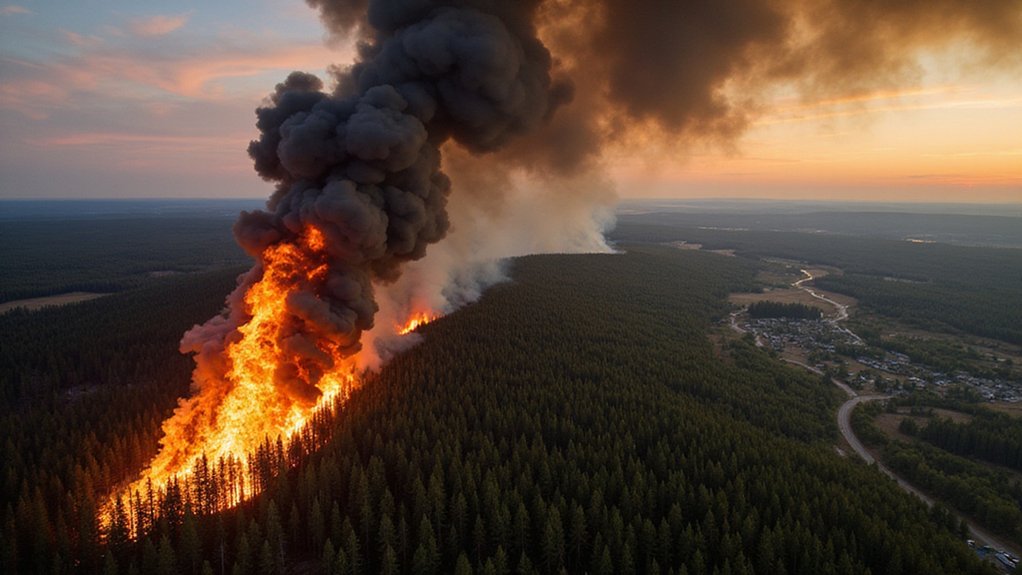A cloud of smoke hangs over Washington state as wildfires grow more frequent and severe across the region. The traditional July-to-October fire season is shifting earlier, with 2025 predictions suggesting possible June ignitions. This year’s Red Bridge Fire, which burned 60 acres and forced evacuations by early June, confirms this troubling trend.
Washington’s shifting fire reality: earlier ignitions, growing severity, and a troubling new normal for the Pacific Northwest.
Fire activity has exceeded the 10-year average by 129% nationally. By August 2025, the National Interagency Fire Center forecasted above-normal fire danger for all of Washington, leading to a Preparedness Level 4 designation that signals high wildfire threat.
Climate factors are driving this change. Washington faces significant drought with below-average rainfall statewide. Seattle reported a 5-inch rainfall deficit by June 2025. Record-breaking early heat and rapidly melting snowpack have created drier terrains vulnerable to fire. The Climate Prediction Center projects higher-than-normal temperatures and reduced rainfall to continue.
Paradoxically, increased winter and spring precipitation contributes to the problem. These wetter seasons promote more vegetation growth, creating greater fuel availability once dried out in summer heat. Abundant grasses and shrubs become fast-burning fuels that facilitate fire starts and spread. Similar to Spain’s recent blackout, Washington’s situation demonstrates how weather variability challenges can transform into widespread emergencies with cascading effects.
The geographic impact is expanding. While eastern Washington traditionally faced the highest risk, western areas and Cascade foothills now face increased danger. The Burdoin fire alone burned over 11,160 acres since July 18, causing significant structural damage. Major urban centers including Seattle and Bellevue experienced smoke and air pollution episodes in August 2025.
Communities in Yakima, Mason, Stevens, and Lincoln counties have faced evacuation orders. The drought emergency now encompasses populous areas in King, Pierce, Snohomish, Whatcom, and Skagit counties.
Demand for wildland firefighting resources has surged nationally, straining available personnel and equipment. The ratio of human-sparked to naturally occurring fires remains high, compounding the challenge. Approximately 73% of wildfires in Washington from 1992 to 2020 were caused by human activity rather than natural sources.
As windy episodes dominate fire environments, especially east of the Cascades, Washington faces a troubling new reality: earlier, more frequent, and more severe wildfires becoming the norm rather than the exception.
References
- https://en.wikipedia.org/wiki/2025_Washington_wildfires
- https://www.axios.com/local/seattle/2025/06/09/washington-wildfire-season-early-risk-2025
- https://www.nifc.gov/nicc-files/predictive/outlooks/monthly_seasonal_outlook.pdf
- https://www.nifc.gov/fire-information/nfn
- https://www.globalforestwatch.org/dashboards/country/USA/48?category=fires








